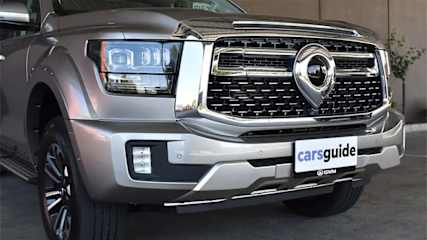Watch out Ford Ranger and Toyota HiLux: 2026 Volkswagen Amarok picks up new cab-chassis tray option, off-road 10 Deserts Edition 4WD special and price cut for flagship Aventura turbo-petrol
By Jack Quick · 30 Jun 2025
Volkswagen Australia has detailed its model year 2025 (MY25) update for the Amarok dual-cab ute ahead of first arrivals during the second half of 2025.The Amarok line-up continues to open with the Core TDI405 at $55,490, before on-road costs, or $55,990 drive-away. The latter price is $2000 more than the MY24 version.The line-up still extends all the way to the Aventura TDI600 at $82,990, drive-away. This is $3000 more than the MY24 version.Almost every Amarok variant picked up a drive-away pricing increase for MY25 except the Aventura TSI452 which continues to be the only variant offered with the 2.3-litre, four-cylinder, turbo-petrol engine.It now starts at $79,990, drive-away, which technically remains unchanged from MY24. A full pricing table is at the bottom of this story.Headlining the MY25 Amarok update is the introduction of the off-road-oriented 10 Deserts Edition TDI500 which was made to commemorate the company achieving a Guinness World Record last year.Only 300 examples of this limited-edition dual cab ute are being made and they’re priced from $68,490, before on-road costs, or $69,990, drive-away. This is $8000 more expensive than the Amarok Life TDI500 which it’s based on.The 10 Desert Edition TDI500 features a 40mm suspension lift, 17-inch satin black wheels wrapped in Continental ATR tyres, underbody protection, a black sports bar, soft tonneau cover, all-weather floor mats and ‘10 Deserts’ decals.Additionally, MY25 versions of the Amarok Style, Panamericana and Aventura trims get 230V power sockets with an Australian plug pattern, backed by an integrated 400W inverter. They also pick up a ‘Trailer Assist’ mode which makes hitching and reversing trailers easier.It’s worth noting the related Ford Ranger also recently picked up these features as part of an update.Another change for MY25 is the ‘Mid Blue Metallic’ exterior paint option has been replaced by the new ‘Reed Green Metallic’ finish.Lastly, Amarok Core, Life and Style variants now get the option of a cab chassis tray body style.Opting for this is an additional $4000 over the standard asking price of the dual cab pick-up variant.Included is a standardised alloy tray that weighs 132kg and measures 1650mm long by 1900mm wide. There’s also a steel tray that weighs 243kg and measures similarly to the alloy tray, but pricing for this hasn’t been disclosed.Both of these trays are available as dealer-fit accessories, meaning they are covered by the same five-year, unlimited-kilometre warranty as the Amarok itself.It also means any existing current-generation Amarok can have a tray retrofitted as a dealer-fit accessory.


.jpg)

.jpg)

.jpg)
.jpg)

.jpg)